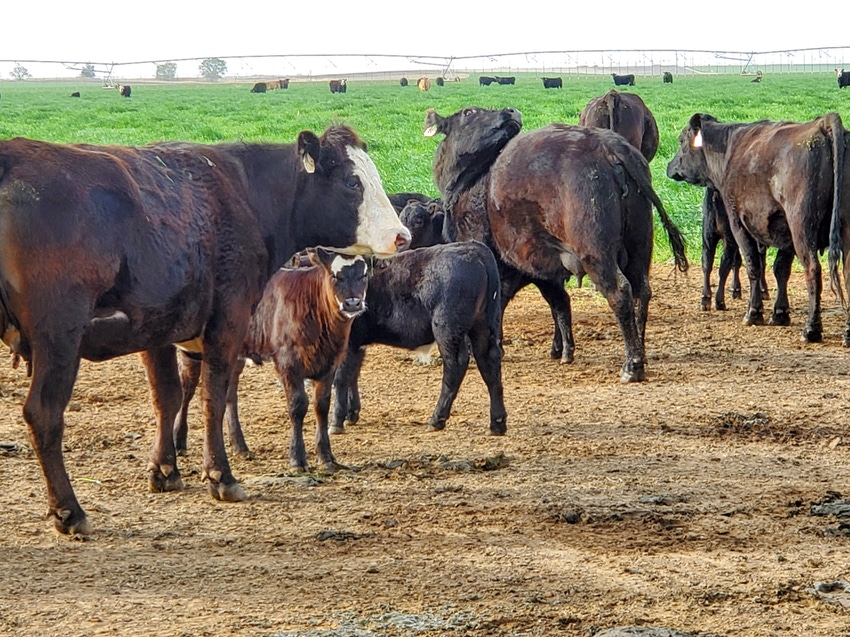
Many cow-calf operators are in the process of or getting ready to castrate male calves, immunize every calf against blackleg and respiratory diseases, and in some situations, booster yearlings.
Correct administration of any injection is a critical control point in beef production and animal health, said Rosslyn Biggs, Oklahoma State University Extension beef cattle veterinarian and director of continuing education for the university’s College of Veterinary Medicine.
“There is a negative relationship between meat tenderness and injection sites, including injection sites that have no visible lesion,” she said. “Intramuscular injections, regardless of the product injected, may create permanent damage regardless of the age of the animal at the time of injection.”
Research shows tenderness is reduced in a 3-inch area surrounding an injection site. Moving the injection site to the neck stops damage to expensive steak cuts.
Biggs said producers should make certain people administering medications to livestock are sufficiently trained as to the proper location for injections and that all label instructions are followed when administering injections.
Some vaccines allow for a choice between intramuscular and subcutaneous administration. Subcutaneous means under the skin, intramuscular means in the muscle.
“All injections should be given in front of the shoulder, subcutaneously if possible, and in the manner indicated on the product label,” Biggs said. “Proper restraint of the animal is necessary for human and animal safety.”
An emphasis on proper injection technique is just one of many Beef Quality Assurance components that has had a positive effect on the entire U.S. beef industry, said Bob LeValley, Oklahoma BQA coordinator with the Oklahoma Beef Council and OSU’s Division of Agricultural Sciences and Natural Resources.
BQA is a nationally coordinated, state-implemented program that provides information to U.S. beef producers and consumers about how common-sense production techniques can be coupled with science-based knowledge to raise cattle under optimum management and environmental conditions.
“It’s important to follow BQA guidelines, as the program raises consumer confidence through offering proper management techniques and a commitment to quality within every segment of the beef industry,” LeValley said. “In addition to using proper injection protocols, producers working calves need to keep accurate treatment records.
BQA guidelines for treatment records are to include:
Individual animal/group identification.
Date treated.
Product administered and manufacturer’s lot/serial number.
Dosage used.
Route and location of administration.
Earliest date the animal will have cleared the withdrawal period.
Name of the person administering the product.
Treatment records should be stored and kept for a minimum of three years after each animal has been sold.
More information about the Oklahoma Beef Quality Assurance program is available online. Research-based information detailing best management practices for beef producers is available through the OSU Beef Extension website and video segments produced by OSU Extension’s award-winning agricultural television program SUNUP can be watched online.
Source: is OSU, which is solely responsible for the information provided and is wholly owned by the source. Informa Business Media and all its subsidiaries are not responsible for any of the content contained in this information asset.
About the Author(s)
You May Also Like




